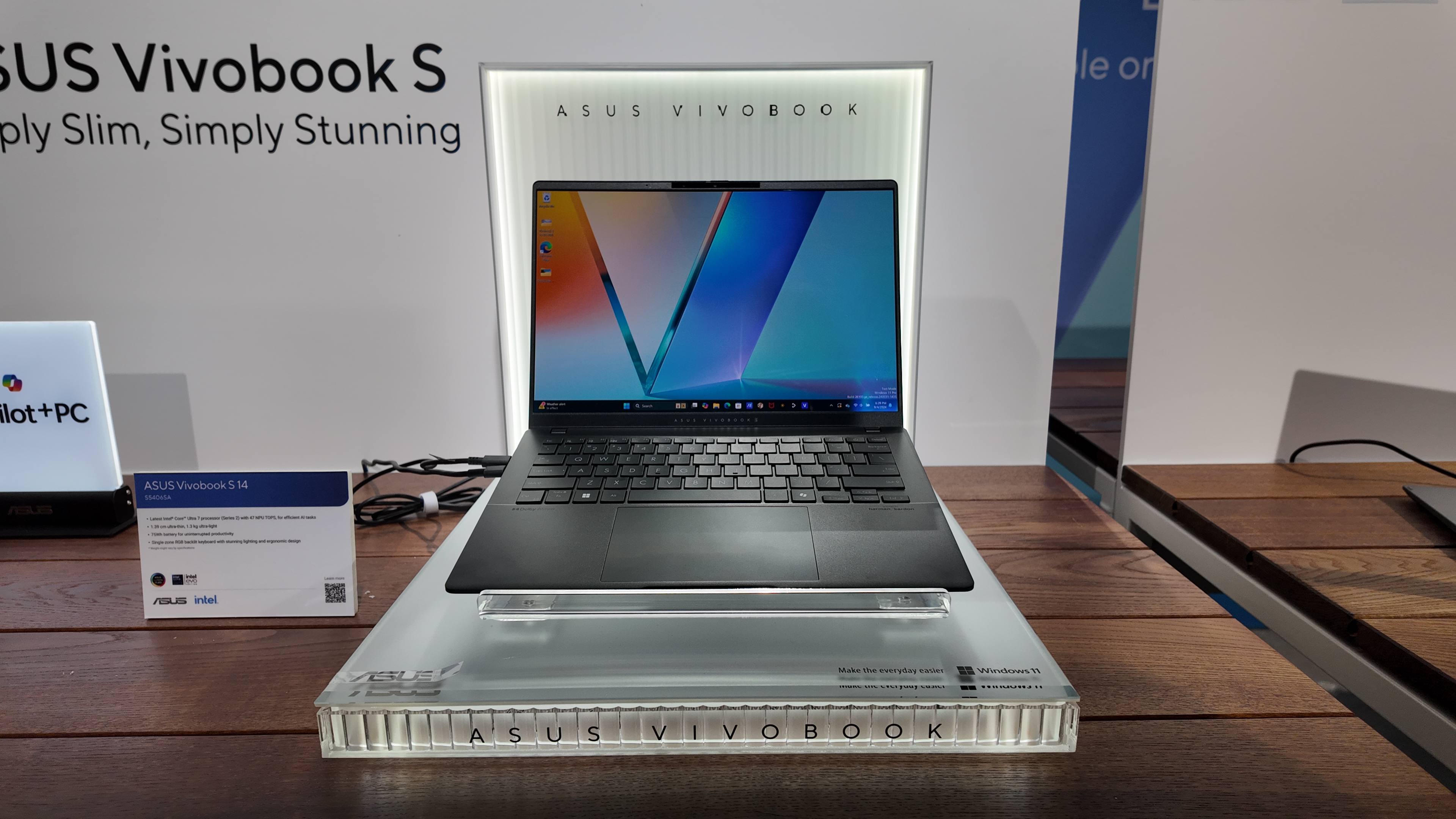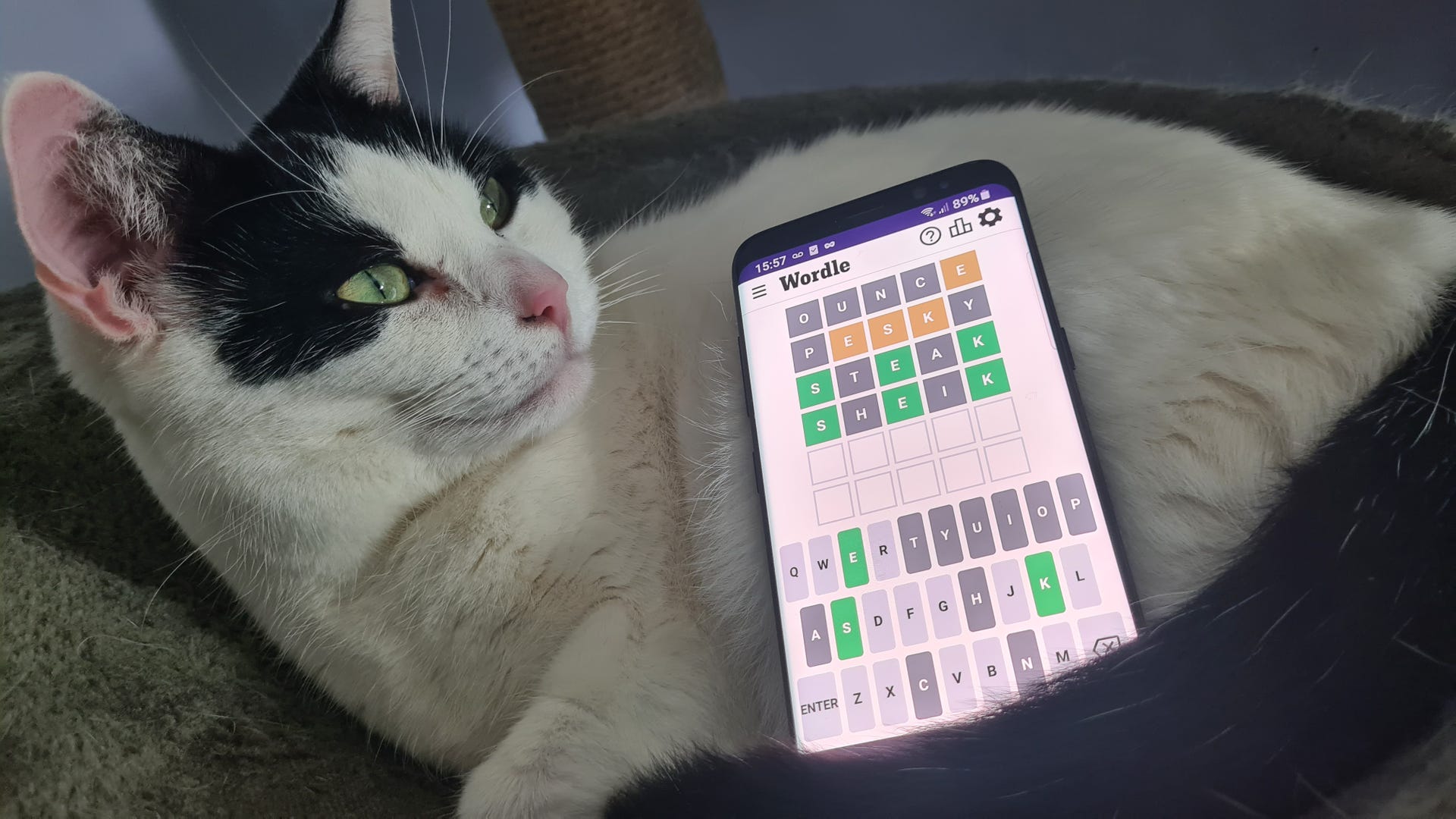
Intel's new Lunar Lake chips are helping Asus deliver battery life equaling, or even excelling, Qualcomm's ARM chips.
If there’s one thing that office laptops hold over gaming laptops, it’s battery life, and that disparity is only growing following this latest batch of thin and light laptops fitted with Intel Lunar Lake, Core Ultra 200V-series processors at an Asus IFA event.
Take the Asus Vivobook S 14, one of the company’s latest thin and light laptops. It’s not one to stand out for a gaming laptop connoisseur yet for a new office or school laptop, take note of the OLED screen, all-metal chassis, 1.3 kg weight, and 27 hours of battery life.
Yeah, 27 hours. Or so say Asus.
The Zenbook S 14, too, comes with lofty claims of well over 20 hours of battery life, and that’s a sleeker shell than the Vivobook that I’d prefer myself. The new ExpertBook P5 also promising up to 28 hours of video playback life, or 20 hours of “office productivity”, though that could be anything from opening a word document every hour to furiously filling in spreadsheets.
All utilise batteries 70 Whr or greater in size.
If we’re being a bit more realistic for a moment, these are going to be best case scenarios. Though they’re still pretty good evidence for power efficiency gains made by Intel with its latest Core Ultra 200V, codename Lunar Lake, chips.
(Image credit: Future)
Intel says it’s been focused squarely on power efficiency for a good part of Lunar Lake’s development. Combined with TSMC’s power savvy process node, it’s all turned out seemingly very well for Intel. All offer four E-cores, four P-cores and a reasonably chunky Xe2 GPU, too, so they’re not shaping up to be a slouch.
Asus also announced new ARM-powered laptops at IFA. Importantly, one makes for good comparison here. There’s the Asus Vivobook S 15, with a 70 Whr battery and new Snapdragon X Plus chip, providing “19+ hours” of battery life. It also has a 3K OLED, though a larger 15-inch version; and comes with plenty of connectivity and Wi-Fi 7.
Now, that’s still a stellar battery life by any standard, though Intel does appear to have it beat for battery in Asus’ designs. The Intel-based design does have the slight advantage of another 5 Whr in the battery, however, at 75 Whr to 70 Whr in the larger Qualcomm-powered device.
(Image credit: Future)
Whether we’ll see these claims play out quite so neatly when it comes to independent testing, well, we’ll see about that. These battery tests can be pretty variable in method and execution. Though this gain for Intel putting it onto a more equal footing with Qualcomm does bode well for claims repeatedly made by Intel VP Robert Hallock that “it is not the instruction set architecture (ISA) that broadly dictates power.” In short, it’s not as simple as ARM versus x86.
That’s a point that Intel needs to prove through actions, not words, if it’s to stave off new competition from ARM-based laptops, largely powered by Qualcomm’s processors These are laptop designs that forego any sort of x86-based processor from itself or AMD, and which have been seen as a huge threat to Intel’s lucrative mobile business.
These Asus laptops certainly offer a strong rebuttal to any claims ARM is intrinsically better, though I have a strong feeling this battle for battery life is far from over.





